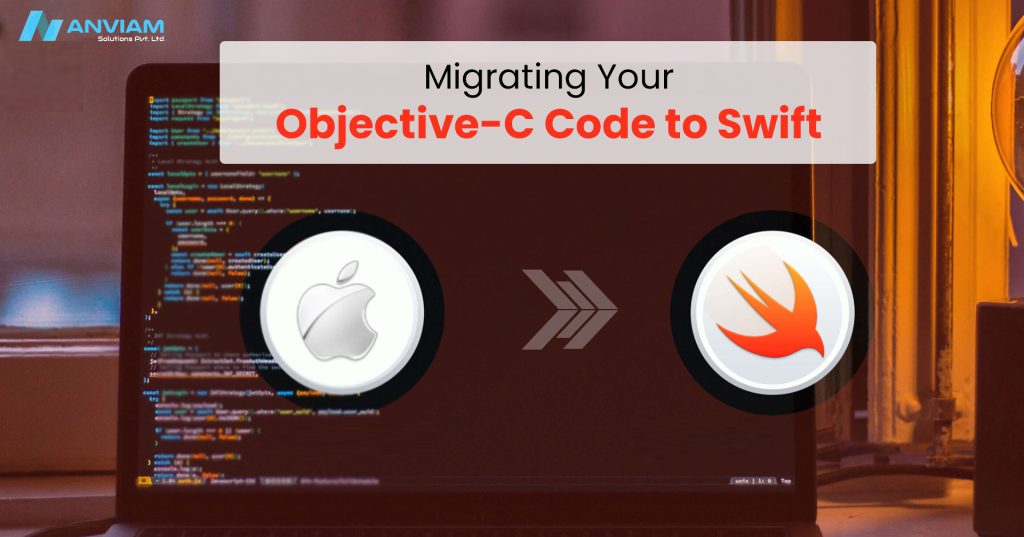
Migrating Your Objective-C Code to Swift – Are you designing an iOS app? Confused about choosing between Swift and Objective-C for your development process? You might be confused in the near future. At least after Apple announced Swift as the new programming language to replace Objective-C, it might be confusing. The announcement got some app developers thinking about what the future holds.
Swift and Objective-C are the two most utilized programming languages for iOS developers. It might be challenging to choose between the two languages, but this article should be helpful.
The main programming language used to create OS X and iOS applications has long been Objective-C. In essence, Objective-C is a superset of C that includes dynamic runtime support and object-oriented capabilities. Apple unveiled Swift, a brand-new programming language, in 2014. This is called “Objective-C without C.
Swift for iPhone App Development
Closures, generics, and type inference are just a few of the characteristics that make popular patterns used in Objective-C simpler and easier to utilize. It combines C and Objective-C features without the built-in C compatibility and all the limitations that come with it. With support for Cocoa and Cocoa Touch, Swift is revolutionizing how we think about creating mobile apps for Apple devices.
In this blog, we discuss the top reasons why iOS developers are moving to Swift and how Swift helps iPhone application developers achieve the most efficient performance. We’ll show you how easy and error-free getting started with Swift programming can be, with no setup required for the requirement to import important features and references.
Reasons to Transfer to Swift

Readability
Swift’s simple syntax, which makes it simpler to comprehend and write, is arguably its major benefit. Compared to Objective-C, Swift requires a lot fewer lines of code to implement options. The reason is that Swift removes many obsolete conventions such as B. A semicolon at the end of a line or parentheses around a conditional expression in an if/else statement. Another important change is that parentheses get confused because method calls don’t fit inside each other. Instead, Swift method and function calls employ a list of arguments that are separated by commas and enclosed in parentheses. This results in a simpler syntax and cleaner code.
Maintenance
It is impossible for Objective C to evolve unless C evolves first. Swift, in contrast, lacks these dependencies, making it considerably simpler to maintain. In C, a programmer must maintain her two code files to improve code build time and efficiency. This carries over to Objective C as well.
Swift, however, does not follow this two-file requirement and instead creates a single code file that contains both the Objective-C header (.h) and an implementation file (.m) (.swift). Method names and comments must be manually synchronized across files when using Objective-C. Swift enables developers to devote more time to creating app logic and enhancing the standard of the code, comments, and features that are supported.
Safer Platform
In the highly competitive mobile app market, developing secure apps should be a priority. Many different forms of mistakes that may happen in Objective-C are eliminated by the syntax and language structures of Swift. This stability means fewer instances of crashes and problematic behavior. It doesn’t stop programmers from writing bad code, but it makes them less likely to make mistakes. This increases the amount of quality control applied throughout development.
When programmers create faulty code, Swift generates compiler errors and accepts null code. Swift lets you compile and fix bugs in writing code that Objective-C can’t. Swift performs better than Objective-C in error testing as a result. These are all arguments in favor of Swift’s safety as a programming language.
Less Code & Less Legacy
Numerous faults in Objective-C lead to app crashes. Swift offers inline support for text string manipulation and data manipulation, resulting in less prone to error code. The class is not divided into two halves, either. integration and execution. This halves the number of files in your project and makes it much easier to work with.
Swift ultimately requires less programming effort when writing repetitive statements and doing string manipulations. If you use Objective-C, you have to concatenate two strings, which is cumbersome. In Swift, you can concatenate two strings by simply adding a ‘+’ character.
Speed
Swift also has a number of time-saving features during development that may help you save money. For instance, the Python implementation of the same technique does complicated item sorting 3.9 times quicker. This beats Objective-C which is 2.8x faster than the Python version.
Swift Supports Dynamic Libraries
An executable piece of code that may be connected to your program is a dynamic library. With the aid of this functionality, existing Swift applications may connect to updated versions of the Swift programming language. Swift’s dynamic libraries are uploaded directly into memory, resulting in a smaller initial app size and ultimately better app performance.
Open Source
Swift was announced as open-source in 2015, giving the language the potential to be used on a wide variety of platforms and backend infrastructures. Open-sourcing Swift enables Apple to accept community feedback and make ongoing improvements as independent developers contribute to the language’s success. Swift has been successful not only because of its good structure and design but also because many developers have embraced it.
Open-Source
Migrate Your Code
The most effective approach for migrating code to Swift is file-based. H. One class at a time. Objective-C doesn’t allow you to subclass Swift classes, so it’s a good idea to choose classes in your app that don’t have subclasses. Replace the .m and .h files for this class with a single .swift file. All of the implementations and interfaces go directly into this single swift file. Does not create a header file. Xcode automatically generates headers in case you need to refer to them.
- T Select File > New > File > (iOS, watchOS, tvOS, or macOS) > Source > Swift File to find the Swift classes in the corresponding Objective-C .m and .h files Create a. You can use the same name as your Objective-C class or a different name. Class prefixes are optional in Swift.
- Import relevant system frameworks.
- Enter the Objective-C Bridging header if you need to access the Objective-C code from the same app target in your Swift file.
- To make a Swift class accessible and usable in Objective-C again, make it a descendant of the Objective-C class. To specify a specific name for a class to use in Objective-C, tag it with @objc(name). name is the name that Objective-C code uses to refer to the Swift class.
As You Work
- You can configure your Swift classes to integrate Objective-C behavior by subdividing Objective-C classes, inheriting Objective-C protocols, and so on.
- When working with Objective-C APIs, you need to understand how Swift translates certain Objective-C language features. For more information, see Customizing Objective-C and C code.
- Optionally, use the @objc(name) attribute to give your properties and methods Objective-C names.
- Denote instance (-) and class (+) methods with func and class func, respectively.
- Declare simple macros as global constants and convert complex macros to functions.
After You Finish
- Update the import statements in your Objective-C code (to #import “ProductModuleName-Swift.h”) to reference your new Swift code.
- Clear the target membership checkbox to remove the original Objective-C .m file from the target. Do not delete the .m and .h files immediately. Use it for troubleshooting.
- If you’ve named your Swift class differently, update your code to use the Swift class name instead of the Objective-C name.
Troubleshooting Tips and Reminders
- Your migration experience will vary depending on your existing code base, but here are some general steps and tools to help you troubleshoot the process.
- Note that Objective-C does not allow you to subdivide Swift classes. Therefore, the migrated class cannot contain any Objective-C subclasses.
- To make a Swift class available in Objective-C, make it a descendant of the Objective-C class.
- Command-click the Swift class name to see the generated header.
- Option-clicking an icon reveals implicit information such as B. Types, Attributes, and Documentation Comments.
Conclusion
As a leading IOS development company, we provide iOS app development services around the world. We have worked on many projects like Tankspotter.com which we converted into Objective C to SWIFT. If you are looking to develop your own customized iOS app, Hire an iOs Developer at Anviam Solutions Pvt. Ltd.